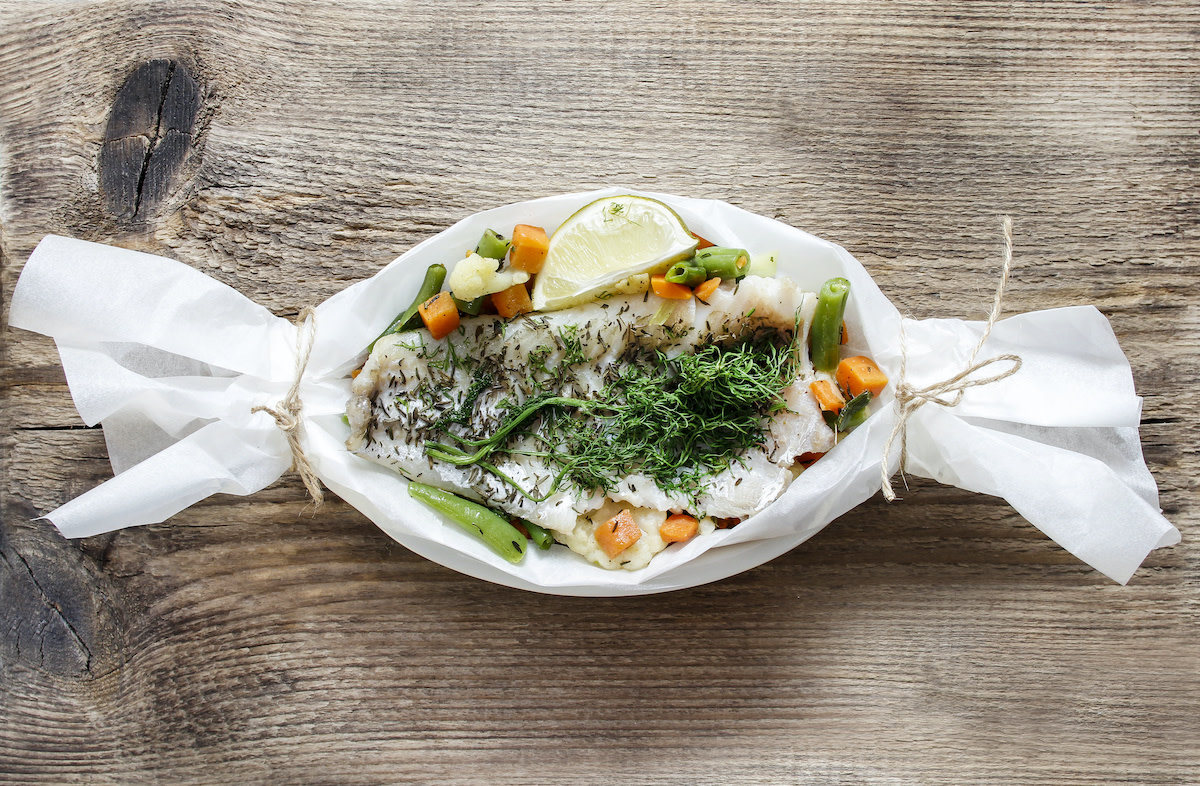How to Cook en Papillote in 7 Easy Steps
Written by MasterClass
Last updated: Jun 7, 2021 • 3 min read
En papillote is a French cooking method that uses steam to gently cook chicken, vegetables, and fish. Cooking en papillote offers home cooks an elegant way to prepare and present delicate foods.
Learn From the Best
What Does en Papillote Mean?
En papillote, French for “in paper,” refers to a cooking technique that uses built-up steam inside a folded piece of parchment paper (or aluminum foil), which gently cooks lighter proteins like fish, thinly cut chicken breast, or vegetables.
Why Cook en Papillote?
There are two essential reasons to cook en papillote: the technique cooks food to exactly the right texture and degree of doneness and it only requires the use of one pan for the parchment to sit atop. En papillote offers a self-contained, dynamic presentation which, after a little practice, is a great way to make a weeknight meal feel like a special occasion.
What Dishes Are Typically Cooked en Papillote?
- Fish en papillote. Delicate fish filets are ideal candidates for cooking en papillote, since they can so easily overcook while roasting or searing. While white fish like cod, halibut, or tilapia are commonly prepared en papillote, you can also use this method of cooking to prepare meatier fish like flounder, snapper, and salmon with great results.
- Chicken breast en papillote. Thin-cut chicken breasts are another good protein to cook en papillote. Marinate the chicken breasts prior to cooking for an extra boost of flavor.
- Vegetables en papillote. Vegetables that benefit from a gentler treatment do especially well en papillote since the steam works to coax out their flavors without turning them to mush. Try the cooking method with zucchini, asparagus, peas, or mushrooms.
How to Cook en Papillote in 7 Steps
- 1. Cut the packet. First, cut parchment paper into a large heart shape. Fold the parchment paper in half lengthwise—the half-heart should be large enough to hold your ingredients with room around the edges.
- 2. Prepare the protein. Prepare the ingredients as you would normally: Season with salt and pepper, and coat with a thin layer of olive oil or butter.
- 3. Layer the ingredients. Next, create a neat tower of featured ingredients on one half of the parchment fold. Nestle fish atop a few leaves of Napa cabbage, or a bed of hearty greens. Chicken breasts can sit on a thick, creamy sauce. Any quick-cooking vegetable, garnishes, or aromatics should be the final ingredient that you place on your tower. (For example, a layer of lemon slices, thinly sliced ginger or fennel, halved cherry tomatoes, mushrooms, or whole spices.)
- 4. Add a liquid (or two). The protein and vegetables will release water as they cook and create steam, but a few extra liquids will round out the flavor profile you’ve built. Keep it simple with a good squeeze of lemon juice or a splash of white wine, or get a little more complex with coconut milk, a citrus marinade, or dashi. Drizzle with extra-virgin olive oil and season once more.
- 5. Seal. Now it’s time to seal the packet. (If you’re using aluminum foil, simply crimp or fold to seal.) Fold the parchment paper in a tight pleated pattern, as you would the edge of a galette, moving down the sides of the heart. Twist off the end to seal the parchment.
- 6. Cook. Preheat the oven to 425°F. Place parchment packets or foil packets on a baking sheet. Fish filets, which should be about 1-inch thick, will cook in as little as 10 minutes, and a single chicken breast should take about 20 minutes. (If vegetables are your main ingredient, time and temperature will vary depending on what you’ve chosen. Trial and error is the best way to find the ideal cook time.) A papillote is ready to come out of the oven when the package is puffed up and browning slightly.
- 7. Serve. Open gently in order to not disturb the hot liquids, and enjoy straight from the packet.
Want to Learn More About Cooking?
Become a better chef with the MasterClass Annual Membership. Gain access to exclusive video lessons taught by culinary masters, including Chef Thomas Keller, Gabriela Cámara, Massimo Bottura, Dominique Ansel, Gordon Ramsay, Alice Waters, and more.
